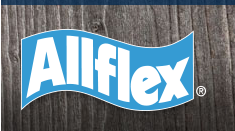With the improvement of living consumption level, the animal husbandry industry is also developing rapidly, and animal husbandry is carried out on a large-scale and professional farming. Let the traditional animal husbandry move forward to develop innovative modern smart animal husbandry. Effectively accelerate the modernization and information construction of animal husbandry. Smart animal husbandry adopts identification technologies such as barcode labels and RFID electronic tags to realize the Internet of Things technology, so that it fully utilizes modern information technology to manage and serve modern animal husbandry. RFID technology helps the healthy development of animal husbandry.
Master the advanced management methods of livestock and poultry farming through the Internet of Things. You can collect the environmental parameters of livestock and poultry houses online through smart wireless sensors, and control the corresponding equipment remotely according to the analysis results of the collected data, so that the livestock and poultry house breeding environment reaches the best state and achieves The goal of breeding, quarantine and income increase.
The intelligent animal husbandry production management system is based on the application of the key technology of the Internet of Things, using barcode technology and RFID technology to identify animals and objects, and using mobile intelligent terminals integrated with related identifiers to perform production management through android applications. And send the data to the background system through the mobile terminal. In order to achieve mobile office production.
Main process of smart animal husbandry system:
1. Feeding link: When the animals are born and raised, RFID tags (such as ear tags or foot rings) are installed on the animals. These electronic tags are attached to the ears when the animals are born. Afterwards, the breeder uses a The handheld device continuously sets, collects, or stores the information of its growth process to control production safety from the source. At the same time, record the epidemic prevention records, disease information and key information of the breeding process of livestock in various periods. Before the slaughter of livestock, the RFID tag must be read through the handheld machine to confirm that the disease-free livestock can be slaughtered.
2. Slaughtering: Before slaughtering, read the RFID tag information on the livestock and confirm that the livestock have the epidemic prevention record and are actually healthy before they can be slaughtered and enter the market. At the same time, write the information into the box label and cargo pallet label And the price tag.
3. Supervisory link of the competent department: During the process of market supervision, the supervisory department requires all pallets, packaging boxes and price tags of sales outlets to contain RFID electronic tags, and the origin, name, type, grade and price of meat Other relevant data is written into the electronic label.
4. Logistics distribution link: Fresh meat enters the circulation link, affixes RFID electronic tags on the trays or boxes loaded with meat, and delivers them to the designated supermarket or market sales point. When handing over the goods, only a fixed distance is required The distance card reader or handheld reader can read the RFID electronic label on the packaging box or tray.
5. Management of foreign animals: If meat products from other provinces and cities that have been slaughtered have to enter the market, first go to the designated supervision site for product inspection, and after the inspection is passed, electronic labels related to product information and relevant inspection information are affixed. . At the same time, the regulatory authorities issued qualification certificates for products sold in the market.
Smart animal husbandry technology not only needs to be identified, identified, tracked and queried from all aspects of agricultural breeding, acquisition, processing, transportation and sales, but also related management of its warehouses, assets and enterprise information, so as to ensure the key core of animal husbandry The comprehensive informatization of business, the informatization of business management, the informatization of management information and the standardization of information services have provided important informational support and services for animal husbandry enterprises, allowing the rapid and healthy development of animal husbandry.
Regions: Russia, USA, UK, Switzerland, Canada










